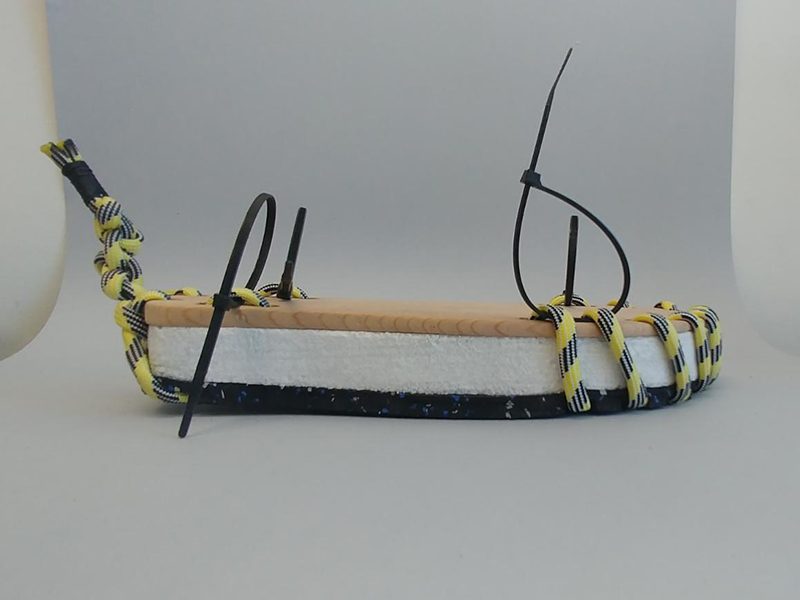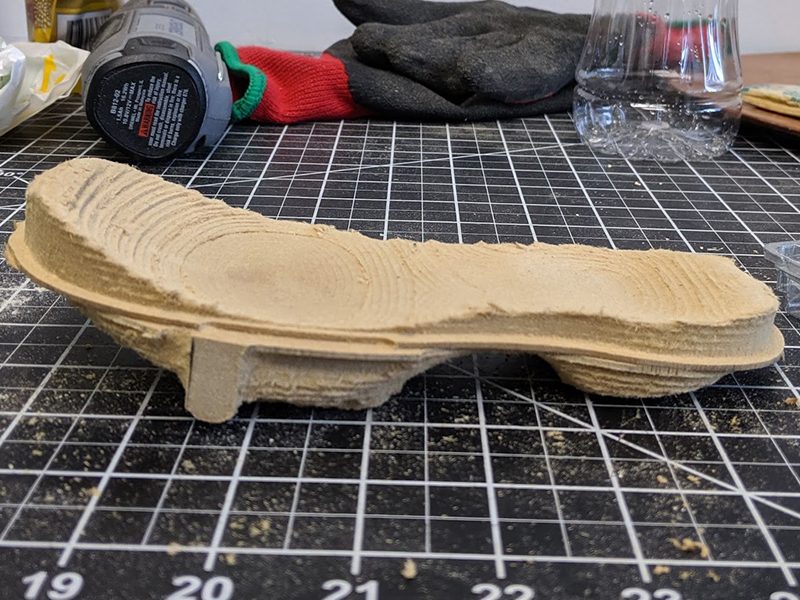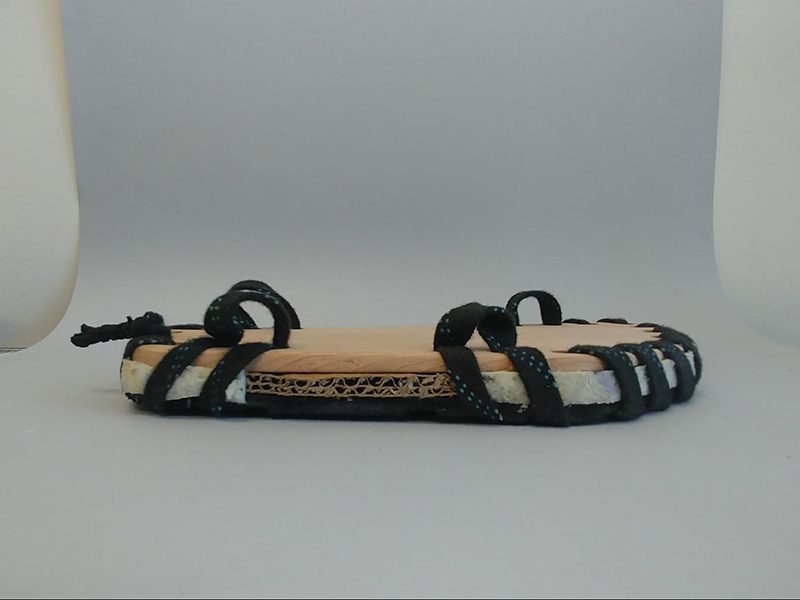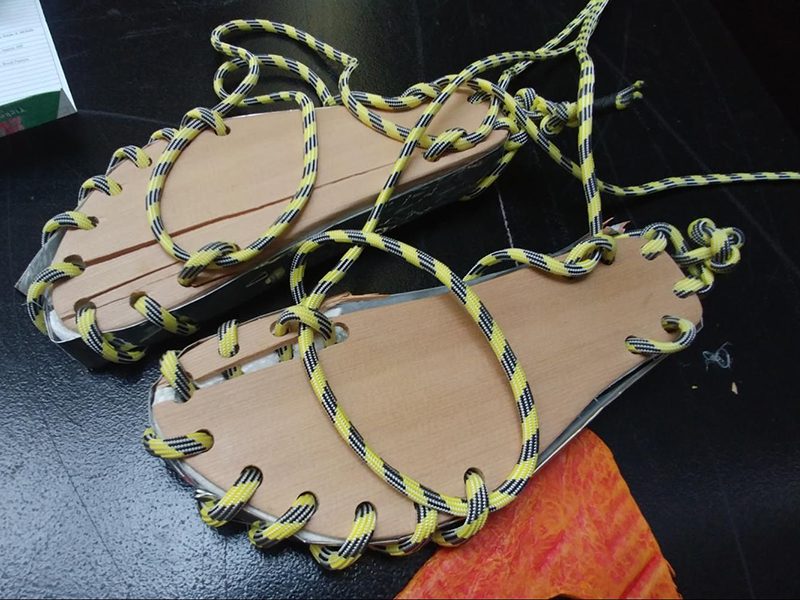Researcher John Bondoc on re-discovering the importance of structured underfoot flexibility for Local for Local Footwear Project:
Lately, we’ve been experimenting with different materials and sandwich structures to allow us to make footwear out of trash. During this time, we’ve re-discovered the importance of structured underfoot flexibility in footwear. This was a difficult admission as it feels a bit obvious, but it will shape the rest of our project and drive our research into the trendier worlds of wood fibre innovation and generative design.
Both my business partner and I have been designing and making shoes for years–we take some things for granted when sending specifications to a shoe factory. Part of what makes a good shoe comfortable, or even walkable at all, is the controlled, dynamic flex of both the upper material and the bottom unit. In short, the shoe needs to flex close to the ball of the foot in one direction (up) more than the other (down). Behind the ball of the foot, the structure may remain more rigid. If it’s too rigid, the shoe may not twist at the waist to follow the natural motion of the foot and if it’s not rigid enough, the whole bottom of the shoe will bow and cause the collar of the shoe to open or gape. When it’s possible to mold plastic into a shape, a footwear designer will intuitively design a slight heel (rise between the ball of the foot and the heel) and some toe spring (a slight rise of the toe between the ball of the foot and the toe). These ‘default’ characteristics allow the shoe to both roll and flex.
Our project attempts to use repurposed materials or wood rather than new plastics of any sort. This means taking sheets of wood and repurposed tires and somehow creating a situation that achieves the flexibility requirements. Our very first attempts resulted in very flat and stiff footwear. The stiffness and lack of roll of the bottom units caused an uncomfortable and sharp pressure over the instep (the area across the top of your foot nearer the ankle). As the foot interacted with the stiff shoe, the shoe pulled away from the heel mimicking a lever. This discovery turned us to finding threads of knowledge from the past, particularly, to wooden footwear. Wooden footwear has been made by different cultures for hundreds of years. The Japanese platform type Geta sandals and Dutch wooden clogs are some of the well known examples of this kind. Both types of footwear create roll by structuring a pivot under the ball of the foot and neither has heel attachment. We have experimented with creating modified versions of Geta and Clog. By distilling these traditional learnings and enhancing them with technologies and processes that didn’t exist back then, I feel we are on our way to uncover a few unique crumbs along our path.
We have made and destroyed dozens of handmade prototypes, with most of them snapping underfoot. We’re starting to dig deeper into the characteristics of wood including species, grain direction, and structure. We’ve also made great progress with our design for CNC skills, including part-flipping, 3D carving, and generative design output. My business partner told me once: “sometimes I think about what we’re doing and it’s either completely brilliant or completely stupid.” I think we’re on to something good.
Further reading: John Bondoc on the process for creating an environmentally responsible product














































































































